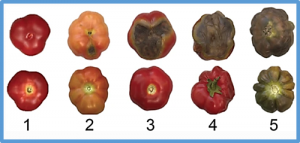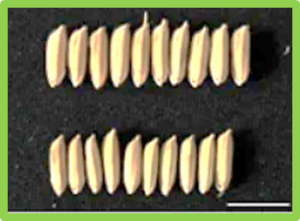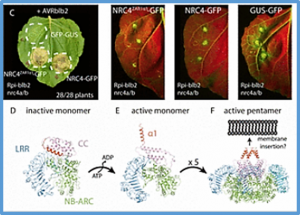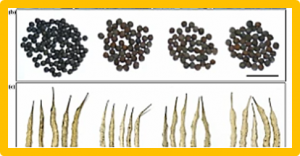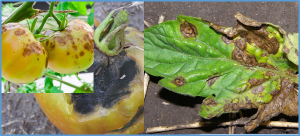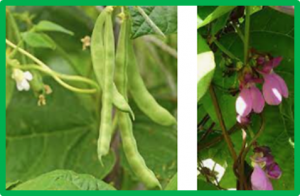Blossom-end rot (BER) is a devastating physiological disorder that affects tomato and other vegetables, resulting in significant crop losses. To date, most studies on BER have focused on the environmental factors that affect calcium translocation to the fruit; however, the genetic basis of this disorder remains unknown. To investigate the genetic basis of BER, two F2 and F3:4 populations along with a BC1 population that segregated for BER occurrence were evaluated in the greenhouse. Using the QTL-seq approach, quantitative trait loci (QTL) associated with BER Incidence were identified at the bottom of chromosome (ch) 3 and ch11.
Rice (Oryza sativa L.) grain size is critical to both yield and appearance quality. Therefore, the discovery and identification of rice grain size genes can provide pathways for the cultivation of high-yielding varieties. In the present work, 45,607 SNP markers were used to construct a high-density genetic map of rice recombinant inbred lines, and hence a total of 14 quantitative trait loci (QTLs) were detected based on the phenotypic data of grain weight, grain length and grain width under four different environments.
Plants employ sensor–helper pairs of NLR immune receptors to recognize pathogen effectors and activate immune responses. Yet, the subcellular localization of NLRs pre- and postactivation during pathogen infection remains poorly understood. Here, we show that NRC4, from the “NRC” solanaceous helper NLR family, undergoes dynamic changes in subcellular localization by shuttling to and from the plant–pathogen haustorium interface established during infection by the Irish potato famine pathogen Phytophthora infestans.
Rice cultivars from japonica and indica lineage possess differential resistance against blast fungus as a result of genetic divergence. Whether different rice cultivars also show distinct metabolomic changes in response to P. oryzae, and their role in host resistance, are poorly understood. Here, we examine the responses of six different rice cultivars from japonica and indica lineage challenged with P. oryzae. Both susceptible and resistant rice cultivars expressed several metabolites exclusively during P. oryzae infection, including the saponin Bayogenin 3-O-cellobioside.
The seed number per silique (SN), an important yield determining trait of rapeseed, is the final consequence of a complex developmental process including ovule initiation and the subsequent ovule/seed development. To explore the genetic mechanism regulating the natural variation of SN and its related components, quantitative trait locus (QTL) mapping was conducted using a doubled haploid (DH) population derived from the cross between C4-146 and C4-58B,
Cryptic introgressions contribute to transgressive segregation for early blight resistance in tomato
Early blight is a widespread and problematic disease affecting tomatoes (Solanum lycopersicum). Caused by the fungal pathogen Alternaria linariae (syn. A. tomatophila), symptoms include lesions on tomato stems, fruit, and foliage, often resulting in yield losses. Breeding tomatoes with genetic resistance would enhance production sustainability. Using cross-market breeding populations, we identified several quantitative trait loci (QTL) associated with early blight resistance.
Carnation SHD-27531-4 is a genetically modified variety of Dianthus caryophyllus L. used as a decorative plant species. The red-purple colour of the flowers results from expression of the two newly introduced genes dfr and f 3’5’h, encoding the enzymes dihydroflavonol 4reductase (DFR) and flavonoid 3’,5’-hydroxylase (F3’5’H). The two enzymes enable the production of the pigments delphinidin and cyanidin (anthocyanidins) in the flower petals.
The roles of clock components in salt stress tolerance remain incompletely characterized in rice. Here, we show that, among OsPRR (Oryza sativa Pseudo-Response Regulator) family members, OsPRR73 specifically confers salt tolerance in rice. Notably, the grain size and yield of osprr73 null mutants were significantly decreased in the presence of salt stress, with accumulated higher level of reactive oxygen species and sodium ions.
Common bean (Phaseolus vulgaris L.) is an important food legume. Fusarium wilt caused by Fusarium oxysporum f. sp. phaseoli is one of the most serious soil-borne diseases of common bean found throughout the world and affects the yield and quality of the crop. Few sources of Fusarium wilt resistance exist in legumes and most are of quantitative inheritance.
Potato (Solanum tuberosum L.) is a staple food crop that could play a major role in improving food security in developing nations. The sustainable production of this crop faces many challenges like pests, diseases, abiotic stresses and post-harvest problems. Transgenic technology and gene silencing strategies offered a new hope of solution to the conventional time consuming breeding programmes. However the genetically modified crops are affected by regulatory approvals and safety concerns.


 Curently online :
Curently online :
 Total visitors :
Total visitors :
